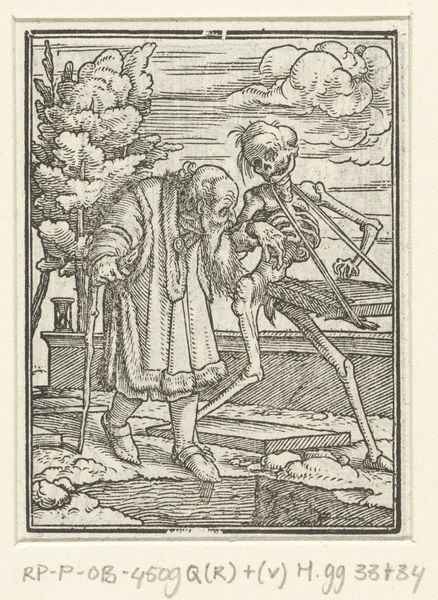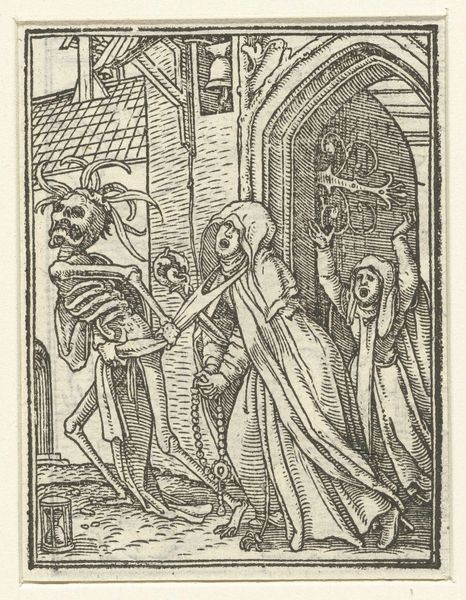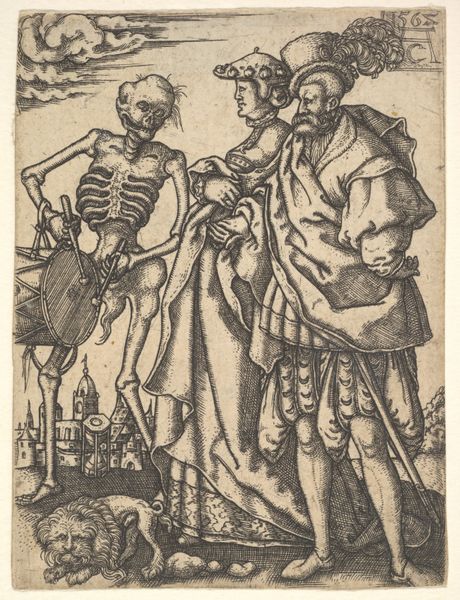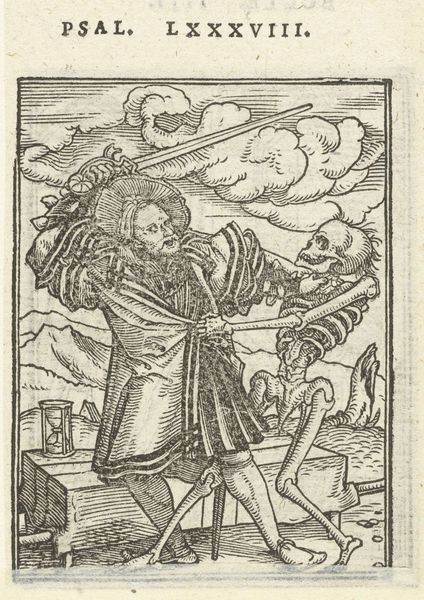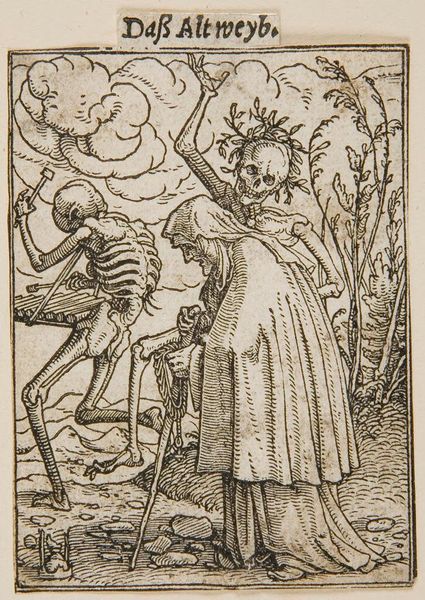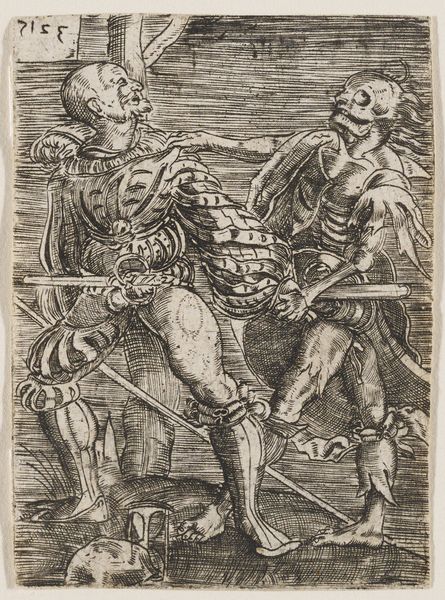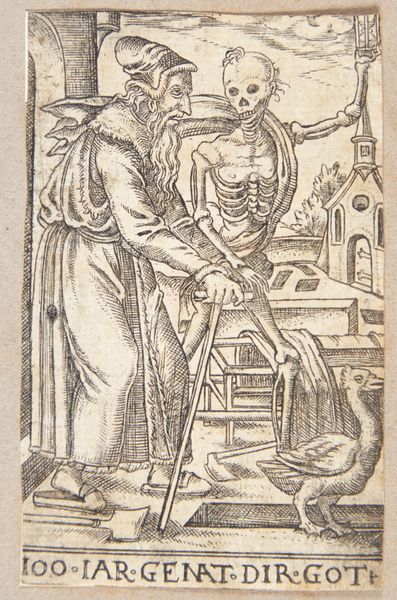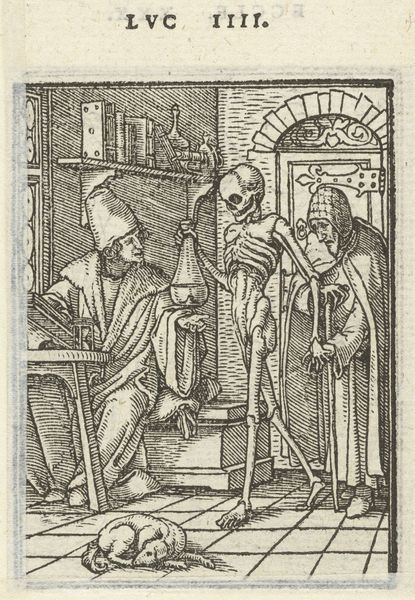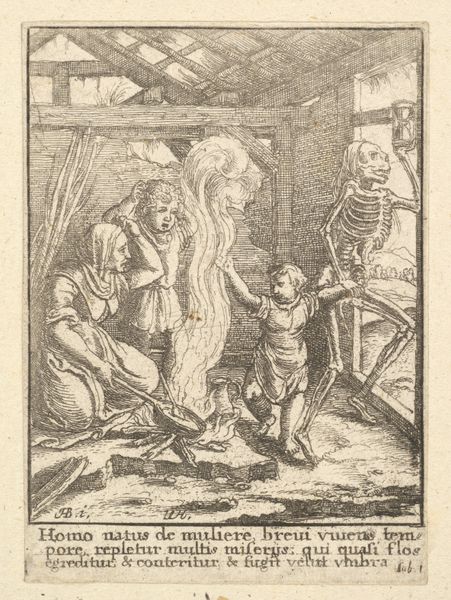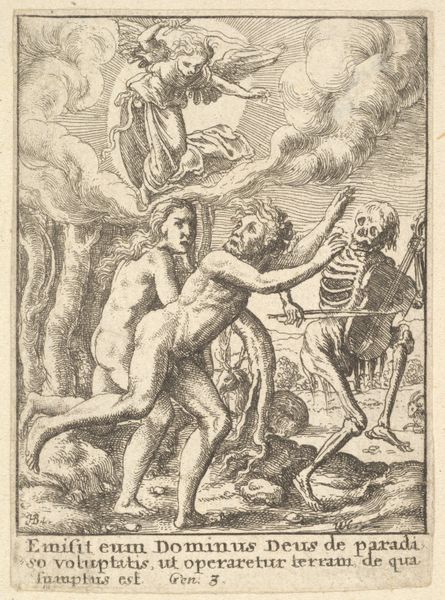
print, ink, woodcut, engraving
#
portrait
#
medieval
#
narrative-art
#
pen drawing
# print
#
old engraving style
#
figuration
#
ink line art
#
linework heavy
#
ink
#
momento-mori
#
woodcut
#
line
#
history-painting
#
northern-renaissance
#
grotesque
#
engraving
Dimensions: height 65 mm, width 50 mm
Copyright: Rijks Museum: Open Domain
Curator: I find this woodcut simply chilling. The stark black lines, the looming skeletons... it gives me the creeps! Editor: And that visceral reaction is precisely what makes it such a potent image! This is "Old Woman and Death," an engraving completed between 1524 and 1538 by Hans Holbein the Younger, currently held here at the Rijksmuseum. It is a piece deeply entrenched in the medieval tradition of the Danse Macabre, or Dance of Death. Curator: I can see that. The dancing skeleton in the center… is that supposed to be Death leading her away? It’s grotesquely beautiful in a macabre way. Editor: More than leading her; consider the multiple Deaths presented to us in this scene. One looms close behind the old woman draped in vines and the other is banging at the xylophone, calling to those who have yet to answer Death's summons. This print isn't just about mortality; it's about the ubiquity and immanence of death within life itself. Look at the clouds—they add an extra dramatic flourish, as do the carefully considered grasses. Curator: Holbein was clearly commenting on societal structures and religion. What was the intent with the vines, especially considering that one figure of death is actively playing music, like he is in some sort of celebratory mood? Editor: Precisely. The wreath of vines serves as a cruel mockery of earthly celebrations, pointing to the futility of pleasure and material wealth in the face of mortality. The old woman, clinging to her rosary beads and walking stick, perhaps embodies piety seeking salvation, or more cynically, her last desperate act. Holbein situates this narrative during a tumultuous period of religious and social upheaval, offering, perhaps, a pointed commentary on the role of faith. What does devotion mean when Death is actively participating in daily existence? Curator: So, Holbein used this incredibly detailed and unsettling depiction to subtly challenge the role and image of established religious institutions and challenge beliefs. Editor: Indeed. He uses the familiar imagery of the Danse Macabre to invite critique during this historical period. Holbein gives us more than a simple depiction of death. Holbein’s perspective is critical and complex, daring to disrupt a society on the brink. Curator: A sobering reminder, and Holbein doesn't let anyone forget that. I wonder how viewers back then processed something like this so early in the printing press' development. Editor: That makes me consider the potential disruption art can foster! Whether through technique or commentary, works such as Holbein’s challenge us.
Comments
No comments
Be the first to comment and join the conversation on the ultimate creative platform.
